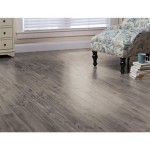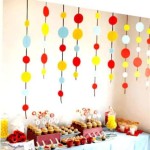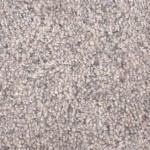Types of Decorative Articles Used In Gift Wrapping Paper
Gift wrapping elevates the simple act of giving to a more meaningful experience. It transforms a present into a token of care and attention. The aesthetics of gift wrapping hinge significantly on the decorative articles incorporated into the design. These embellishments go beyond mere functionality, contributing to the overall impression and reflecting the giver's thoughtfulness. This article examines the diverse range of decorative articles that find application in gift wrapping paper, exploring their materials, styles, and impact on the presentation’s final appeal.
The selection of decorative elements for gift wrapping is influenced by various factors, including the occasion, the recipient's personality, and the desired aesthetic. For instance, wrapping paper designed for children's gifts often features bright colors, playful patterns, and whimsical embellishments, whereas wrapping paper intended for more formal occasions might incorporate sophisticated textures, metallic accents, and minimalist designs. Material cost, availability, and durability are also important factors. This article will examine the various items used for gift wrapping with such thoughts in mind.
Ribbons and Bows
Ribbons represent a classic and versatile decorative element in gift wrapping. They come in a vast array of materials, widths, colors, and textures, allowing for nearly limitless design possibilities. Fabric ribbons, such as satin, grosgrain, velvet, and organza, offer a luxurious and tactile feel, lending an air of elegance to the wrapped gift. Paper ribbons, particularly those made from recycled materials, offer a more eco-friendly alternative. Wired ribbons, featuring a flexible wire running along the edges, provide structure and allow for the creation of elaborate bows and intricate designs.
Bows, often crafted from ribbons, serve as focal points on wrapped gifts. The style of bow can range from simple single-loop designs to more complex multi-layered creations. Looping techniques, knotting styles, and the addition of embellishments like beads or charms can further customize the bow's appearance. Pre-made stick-on bows offer a convenient option for those seeking a quick and easy solution. The color of the bow usually complements the color of the wrapping paper itself. Contrast is often used to achieve a more dynamic look.
Beyond their aesthetic appeal, ribbons and bows offer a practical function. They provide a secure closure for the wrapping paper, preventing it from unraveling. They can also be used to attach gift tags or other small decorative elements to the package. The placement of the ribbon and bow can also influence the overall aesthetic. Centered placement creates a symmetrical and balanced look, while asymmetrical placement adds a touch of modernity and visual interest.
Tags and Labels
Gift tags and labels serve the dual purpose of identifying the recipient and adding a personalized touch to the gift wrapping. They come in various shapes, sizes, and materials, ranging from simple paper tags to more elaborate metal or wooden tags. Labels, often adhesive-backed, offer a convenient way to affix the recipient's name and a short message directly to the wrapping paper.
The design of the gift tag or label can complement the overall aesthetic of the gift wrapping. For example, a rustic-themed gift might feature a tag made from kraft paper with hand-lettered calligraphy, while a modern gift might incorporate a minimalist metal tag with a laser-cut design. Personalization options abound, including hand-written messages, printed names, and even small photographs. Digital printing has made the inclusion of more ornate pictures and graphics increasingly accessible to the average consumer.
Beyond their decorative function, tags and labels offer an opportunity to express sentiments and convey well wishes. They provide a space to pen a heartfelt message or a humorous anecdote, adding a personal touch that goes beyond the material gift. They can also be used to indicate dietary restrictions, allergies, or special instructions related to the gift's use. Gift tags are an excellent choice for those who put emphasis on small details and personal touches.
Embellishments and Adornments
The realm of embellishments and adornments encompasses a vast array of decorative elements that can be used to enhance gift wrapping paper. These include items such as stickers, sequins, glitter, charms, buttons, and miniature ornaments. The choice of embellishment depends on the desired aesthetic and the occasion. They offer a way to add texture, dimension, and sparkle to the wrapped gift.
Stickers, available in countless designs and themes, provide an easy and affordable way to personalize gift wrapping. They can be used to create patterns, highlight specific areas, or simply add a touch of whimsy. Sequins and glitter offer a shimmering effect, catching the light and adding a touch of glamour. Charms, buttons, and miniature ornaments can be attached to ribbons or glued directly to the wrapping paper, adding a three-dimensional element to the design.
Natural elements, such as dried flowers, leaves, and pinecones, offer a rustic and organic touch to gift wrapping. They can be attached with twine or glue, creating a visually appealing and textured effect. These elements are particularly well-suited for gifts intended for nature lovers or those who appreciate eco-friendly designs. The use of natural elements also opens the door for more sustainable and environmentally options for gift wrapping.
Washi Tape and Decorative Tape
Washi tape, a Japanese masking tape made from rice paper, has gained immense popularity in recent years for its versatility and decorative appeal. It comes in a wide range of colors, patterns, and widths, making it an ideal material for adding accents, creating borders, and securing wrapping paper. Decorative tape, often made from paper or plastic, offers similar functionality with a broader range of designs and finishes.
Washi tape can be used to create stripes, polka dots, or other geometric patterns on plain wrapping paper. It can also be used to frame photographs, attach small embellishments, or simply add a pop of color to a neutral background. Its repositionable nature allows for easy corrections and adjustments, making it a forgiving material for novice gift wrappers. Decorative tape, with its wider range of materials and finishes, can be used to create more elaborate designs and textures.
Beyond its decorative function, washi tape offers a practical benefit. It provides a secure closure for the wrapping paper, preventing it from tearing or unraveling. It can also be used to reinforce weak areas or conceal imperfections. The tape can be easily removed without damaging the wrapping paper, making it a convenient and reusable option. The relative low cost and accessibility of washi tape makes it a popular choice for many consumers.
Stamps and Stencils
Stamps and stencils offer a way to create custom patterns and designs on wrapping paper. Rubber stamps, available in various motifs and sizes, can be used with ink pads to transfer images onto the paper. Stencils, typically made from plastic or metal, allow for the creation of more complex designs using paint, ink, or other mediums. These tools provide a high degree of customization and allow for the creation of unique and personalized gift wrapping.
Stamps can be used to create repeating patterns, add personalized messages, or simply embellish the wrapping paper with decorative elements. Stencils allow for the creation of more intricate designs, such as floral patterns, geometric shapes, or custom logos. The use of different colors and mediums can further enhance the visual impact of the stamped or stenciled design. Some particularly skilled artists and hobbyists can even create these embellishments themselves.
The use of stamps and stencils requires a bit more skill and patience than other decorative methods, but the results can be highly rewarding. They offer a way to create truly unique and personalized gift wrapping that reflects the giver's creativity and attention to detail. The relatively low cost of stamps and stencils, and their ability to be used and reused many times, makes them a practical and economical option for those who enjoy crafting.
Glitter and Confetti
Glitter and confetti are quintessential decorative elements for adding sparkle and festivity to gift wrapping, especially for celebratory occasions like birthdays and holidays. They can be applied directly to the wrapping paper using adhesive or sprinkled inside clear cellophane wrapping for a dynamic, shimmering effect. These elements are often associated with joy and celebration, instantly enhancing the celebratory nature of the gift presentation.
Glitter comes in various sizes, colors, and textures, ranging from fine iridescent dust to larger, chunkier flakes. Confetti is typically available in assorted shapes and colors, offering a playful and whimsical touch. When using glitter, it's advisable to apply it sparingly to avoid an overwhelming or messy presentation. A light dusting of glitter can create a subtle shimmer, while a more generous application can create a bold and glamorous effect. Confetti can be scattered artfully or arranged in specific patterns for a more controlled and intentional aesthetic.
While glitter and confetti can add a significant visual impact, it is important to consider the environmental implications of using non-biodegradable glitter. Eco-friendly alternatives, such as biodegradable glitter made from cellulose or plant-based materials, are becoming increasingly available and provide a more sustainable option for those concerned about environmental impact. Careful selection of materials can ensure that decorative elements align with both aesthetic preferences and ethical considerations.
Calligraphy and Hand-Lettering
Calligraphy and hand-lettering involve the art of beautiful writing, lending a sophisticated and personal touch to gift wrapping. Employing calligraphy pens, brushes, or markers, skilled individuals can inscribe names, greetings, or quotes directly onto the wrapping paper or create personalized gift tags. This technique adds an element of artistic flair and demonstrates a high degree of thoughtfulness and effort.
The style of calligraphy or hand-lettering can be tailored to suit the occasion and the recipient's preferences. Elegant script fonts are often employed for formal occasions, while more casual and playful styles may be used for informal gifts. The choice of ink color and the use of decorative embellishments, such as flourishes or embellishments, can further enhance the visual appeal. The use of light and dark shades can increase the dimension of the lettering.
Beyond the aesthetic value, calligraphy and hand-lettering offer an opportunity to convey heartfelt sentiments in a unique and memorable way. Personalized messages, written in elegant script, become cherished keepsakes that enhance the emotional value of the gift. While professional calligraphy services are available, individuals can also learn basic hand-lettering techniques to add a personal touch to their gift wrapping endeavors.

A Beginner S Guide To Choosing Gift Wrap From 3 Popular Finishes Kudos Giftwrap

52 Gift Wrapping Ideas For Easy

50 Best Gift Wrapping Ideas For Every Occasion

55 Gift Wrapping Ideas For 2025 How To Wrap A Present

50 Unique Gift Wrapping Ideas For 2025

4 Ish Gift Wrap Alternatives The Pros Use And How To Make Them Look Great Wirecutter

How To Wrap Presents For Tablespoon Com

Gift Wrapping Wikipedia

3 Creative Ways To Reuse Gift Wrap Scraps Hallmark Ideas Inspiration

50 Best Gift Wrapping Ideas For Every Occasion
Related Posts







